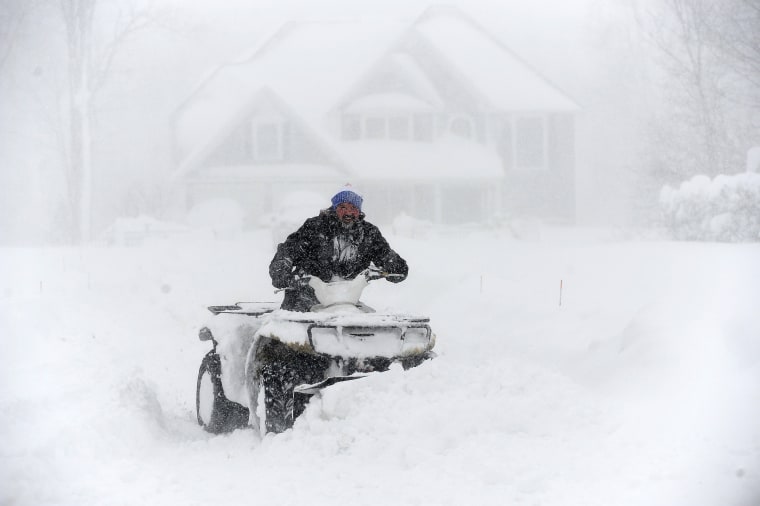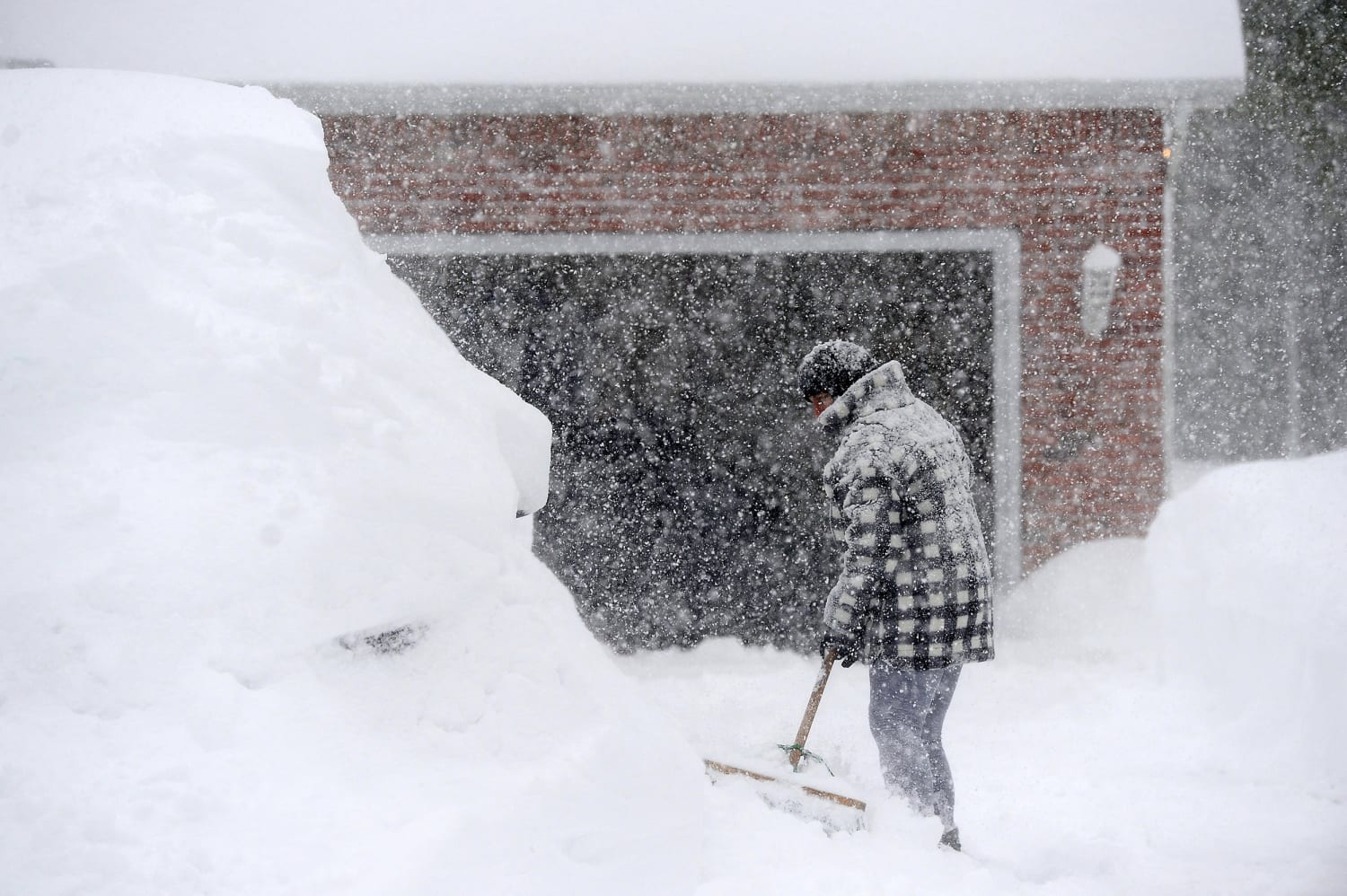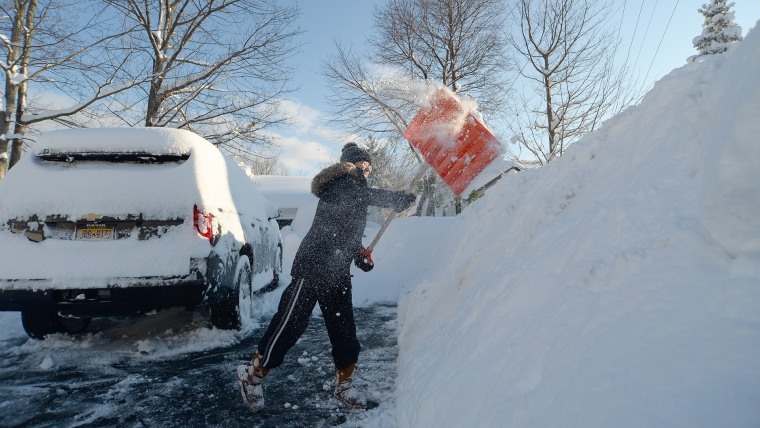WASHINGTON — As winter temperatures arrive across America, government officials are bracing for a surge of households unable to pay rising winter heating bills, and dwindling resources available to help cover the costs.
For the average household, home heating costs are projected to rise 28% — on top of double-digit increases last year — driven largely by the disruption to energy markets caused by Russia’s invasion of Ukraine and surging demand for fossil fuels. At the same time, federally funded programs to help low-income households with those bills will have 42% less money this winter after the billions of dollars in Covid stimulus available last winter runs out.
The surge in demand and drop in aid is causing concern throughout state and federal governments. In anticipation, the White House has taken a three-prong approach the past year, said an administration official: It has urged oil companies to bolster their stockpiles; make funds available to weatherize homes and make them more energy efficient; and prepare for further releases from the country’s petroleum or heating oil reserves.
But temperatures are already dropping and the number of households seeking assistance is already on the rise, according to interviews with more than a half dozen officials involved in programs that provide heating assistance.
“We’re already seeing record numbers of requests this season for utility assistance and really the heating season is just beginning,” said Scott Kelly, general secretary of the Massachusetts division of the Salvation Army, an international charitable organization. “Our social workers are seeing people who have never needed to ask for help before, so it’s definitely concerning to us. We are very concerned about what the future will hold this heating season.”
‘Becoming poor’
Americans are getting squeezed financially on a number of other fronts with inflation that has shown little signs of abating, and the end to a number of pandemic-era assistance programs, such as the emergency rental assistance funding and the child tax credit that provided hundreds of dollars a month to households before it expired last year.
Kelly said the Salvation Army in Massachusetts has received twice as many applications as it did this time last year for its winter heating assistance program, which is aimed at those whose incomes are too high to qualify for federal assistance.
One of those seeking help this winter is Malonie Bernard. She said her family has been struggling to pay its utility bills with a single income from her fiancé after she left her job at a nursing home during the pandemic to take care of her three children.
As the temperatures have dipped into the 20s at night in her hometown of Fitchburg, she has yet to turn on the gas heat in her apartment.
Instead, her 9- and 12-year-old children sleep under multiple blankets in heavy pajamas and some nights she uses her body heat to keep her 11-month-old baby warm. She strategically uses space heaters, is sure to use the oven instead of the stove, and times her laundry so the dryer will help warm the house in the evening.
Each month, Bernard says she has to juggle what bills to pay and what ones to delay as costs have kept rising. Over the summer her electric bill for her seven-room apartment shot up to $700 one month, it had previously never gone above $200, and she’s run up an unpaid balance of about $1,000. For the winter, she’s anticipating her gas bill will be well above last winter’s of $600 a month — money her family doesn’t have in their budget.
“It’s hard. It’s so hard asking for help, but at this point, we have no choice,” said Bernard. “We feel bad, as if we’re taking it from someone else who really, really needs it. So we try to push it, but I said this year, I don’t think we’re going to be able to push it.”
In Colorado, the demand for assistance through the federally funded Low Income Home Energy Assistance Program, know as LIHEAP, is expected to far outstrip the demand, said Theresa Kullen, who manages the program in Colorado. Kullen said she expects applications to be up 10% this winter on top of the 10% increase they saw last year.
“We’re very concerned about how much we can do because we know it’s not enough, there’s just not enough money to do what we need to do,” said Kullen. “With the pandemic relief funds we were able to do so much good, and that money is now gone. And so we are taking a step backwards.”
But many of those who apply this year will find far less help available to them now that pandemic-era programs have run dry.
“If Congress doesn’t step in and find some way to help the bottom third of the population pay these bills you’ll see more suffering and they’ll just be poor instead of being working class, and that’s what they’re afraid of, working-class families are afraid of becoming poor,” said Mark Wolfe, executive director of the National Energy Assistance Directors Association. “You no longer have what makes you feel lower middle class, you now feel poor, and that’s what’s happening across the board with these inflationary increases, and it’s subtle, it’s quiet.”
Congress has allocated $4.8 billion for heating assistance this winter through the Low Income Home Energy Assistance Program, which is $1 billion more than pre-pandemic funding levels. But that will be far less than the $8.3 billion available last year with the addition of Covid relief funds.
Despite the extra assistance last year, 20 million households are already behind on their utility bills owing a total of $16 billion in overdue payments — an average of $800 per household, according to NEADA. That’s up from $8 billion in utility bill debt at the start of the pandemic.

Energy costs are on the rise for a range of reasons. Prices for natural gas, the most common form of winter heating in the U.S., are projected to rise 28% this winter, largely because of increased demand in Europe following Russia’s invasion of Ukraine, according to the Energy Information Administration.
The price of heating oil, which is widely used in New England, is expected to be up 27% this winter, and it will cost the average home $1,000 more this winter for heating oil than two years ago, according to NEADA. Heating oil prices are linked to the price of crude oil, which has been increasing as a result of surging demand following the pandemic, limited refinery capacity and uncertainty in the markets from Russia’s invasion of Ukraine.
In Maine, where the majority of households rely on heating oil, officials have seen a 10% uptick in applications so far this year for its heating assistance program that provided help to 40,000 households last year. Without the Covid stimulus money this year, Maine will provide benefits to around the same number of households, but the amount they receive will be about half of last year’s benefit, said Scott Thistle, a spokesman for MaineHousing.
“Last winter, we were able to provide about a tank and a half of heating benefit. This year, we’re going to be able to provide them with less than a tank. Maybe if we’re lucky, depending on the price of oil, we’ll get two-thirds or a half a tank so it just doesn’t go as far,” said Thistle.
The cost of heating oil has been a particular concern for the Biden administration, said the government official. Biden and Energy Secretary Jennifer Granholm have been urging oil companies to cut exports of diesel, which is chemically the same as heating oil, to keep more in the U.S. to build up stockpiles in the Northeast in case there are supply disruptions or colder-than-expected weather that leads to a surge in demand.
Heating oil and diesel inventories are at their lowest levels on record for this time of year.
The administration is also prepared to tap into the Northeast Home Heating Oil Reserve, which has about 1 million barrels of heating oil, if necessary, the administration officials said.
The White House announced earlier this month it was also distributing $9 billion from the Inflation Reduction Act passed earlier this year to help 1.6 million households upgrade their homes to lower energy bills, like providing rebates to purchase a new electric stove, install new insulation or energy efficient appliances. The administration is also distributing $3.16 billion from the Bipartisan Infrastructure Law to retrofit thousands of low-incomes homes to make them more energy efficient while lowering utility bills, including installing insulation and updating heating and cooling systems.
Longer term, the Biden administration is looking for ways to expand heat pump use and manufacturing in the U.S. and develop programs to improve building energy efficiency, according to an announcement earlier this month.
Source: | This article originally belongs to Nbcnews.com










